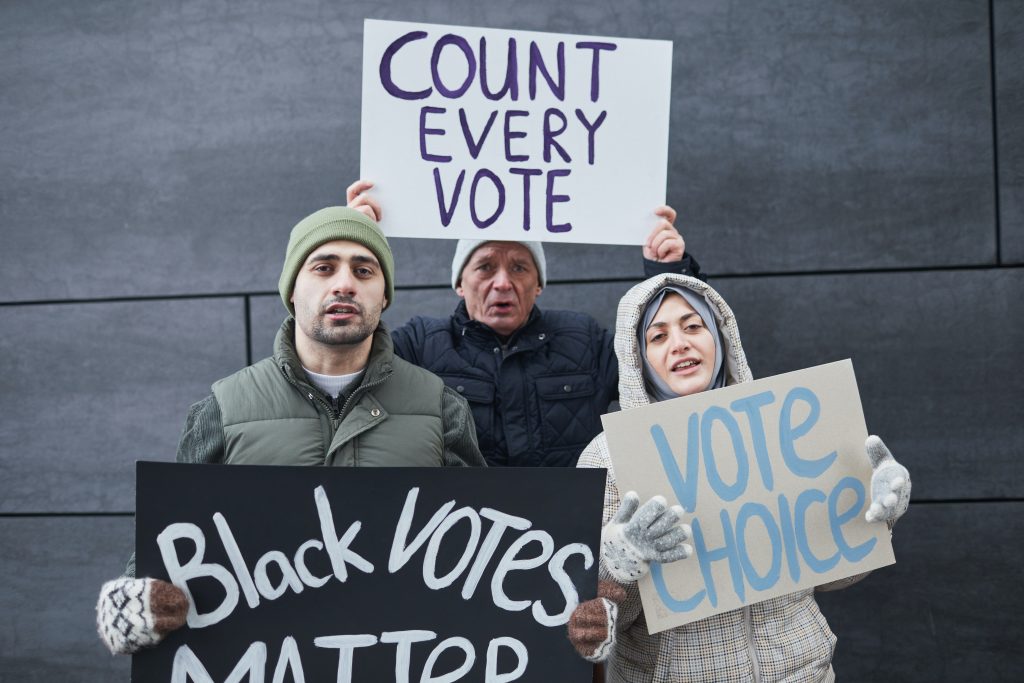Last week, the Supreme Court handed down one of the most highly anticipated decisions of the term—Allen v. Milligan. The Court’s 5-4 ruling struck down Alabama’s 2020 redistricting map as racially gerrymandered and ordered the state to redraw the map with a second majority-black congressional district. The decision, authored by Chief Justice John Roberts and joined by the three liberal justices and Justice Kavanagh, came as a shock to legal scholars and as a pleasant surprise to voting rights activists.
The case, formerly known as Merrill v. Milligan, concerned the legality of Alabama’s 2020 redistricting plan under Section 2 of the Voting Rights Act of 1965 (“VRA”). Section 2 of the VRA—enacted as an enforcement mechanism of the Fifteenth Amendment—prohibits any voting process or requirement that results in the abridgement of the right to vote on account of a voter’s race, color, or language minority. Significantly, in determining whether a proposed map violates Section 2, the Court’s precedent has focused the analysis on the discriminatory effect of the map, not on discriminatory intent.
At issue in the case was the redistricting plan proposed by the Alabama Legislature after the 2020 census. Despite a black population of 26 percent in Alabama, the challenged map resulted in just one majority-minority district out of seven. The Plaintiffs alleged the redistricting plan impermissibly diluted the black vote in violation of the VRA and asked the district court to enjoin Alabama from putting the map into effect. On January 24, 2022, a three-judge panel—two of which were appointed by former President Trump—issued a lengthy decision stating that the map likely violated Section 2 of the VRA. Accordingly, the district court ordered Alabama to redraw the map in anticipation of the upcoming 2022 congressional midterm elections.
Just one month later, however, the United States Supreme Court granted Alabama’s motion to stay the district court’s decision until a decision on the merits could be made in 2023, allowing the challenged map to go into effect in time for the upcoming 2022 mid-term elections.
Based on the decision to stay the district court’s ruling, the current makeup of the court, and the interest the conservative super majority has seemingly had in further dismantling the VRA, experts predicted a win for Alabama. Thus, when the Court sided with the Plaintiffs and affirmed the decision of the district court in their June 8 decision, it came as a surprise to nearly all in the legal community. Nonetheless, Chief Justice Roberts rejected Alabama’s argument that redistricting must be based on a “race-neutral” benchmark and that a map cannot violate Section 2 if it resembles a sufficient number of race-neutral alternatives.
Instead, the Court endorsed the Section 2 test announced by the Court nearly four-decades ago in Thornburg v. Gingles. The Gingles test analyzes Section 2 challenges using a three-prong framework. To succeed on a Section 2 challenge under Gingles, the Plaintiffs must first prove three pre-conditions: (1) that the minority group in question is “sufficiently large and geographically compact” to constitute a political district; (2) that the minority group in question is politically cohesive; and (3) that the majority group votes sufficiently as a bloc to enable it to defeat the minority’s preferred candidate. If satisfied, the court determines whether there was a violation based on a “totality of the circumstances.”
In his 32-page majority opinion, Chief Justice Roberts carefully walked through each prong of the Gingles test and held that the Plaintiffs had met each requirement. “We see no reason to disturb the District Court’s careful factual findings,” Roberts concluded.
The Supreme Court’s decision merely upheld the status quo for Section 2 claims under the VRA. However, dozens of other Section 2 cases are currently making their way through the courts. Thus, the Court’s decision may have broad implications for the upcoming 2024 election and could potentially determine which party obtains control of the House of Representatives. For example, Robinson v. Ardoin—a Section 2 vote dilution challenge to Louisiana’s redistricting plan—was paused pending the Court’s decision in Allen. The lawyers in that case have already filed to have the pause lifted, and legal experts opine that there, too, the state will be ordered to draw a second minority-majority district.
Sources:
Allen v. Milligan, 599 U.S. ___ (2023).
Thornburg v. Gingles, 478 U.S. 30 (1986).
Robinson v. Ardoin, 37 F.4th 208 (5th Cir. 2022).
Marilyn W. Thompson, Voting Maps Throughout the Deep South May Be Redrawn After Surprise Supreme Court Ruling, PROPUBLICA (June 13, 2023, 9:30 AM).
Ella Wiley, The Supreme Court and Redistricting: LDF’s Work to Safeguard the VRA and Black Political Power, LEGAL DEFENSE FUND (Oct. 6, 2022).
Wall Street Journal, Racial Gerrymandering by Supreme Court Order (June 8, 2023, 7:04 PM).
Michael R. Dimino, Courthouse Steps Decision: Allen v. Milligan, FEDERALIST SOCIETY (June 15, 2023, 1:00 PM).

